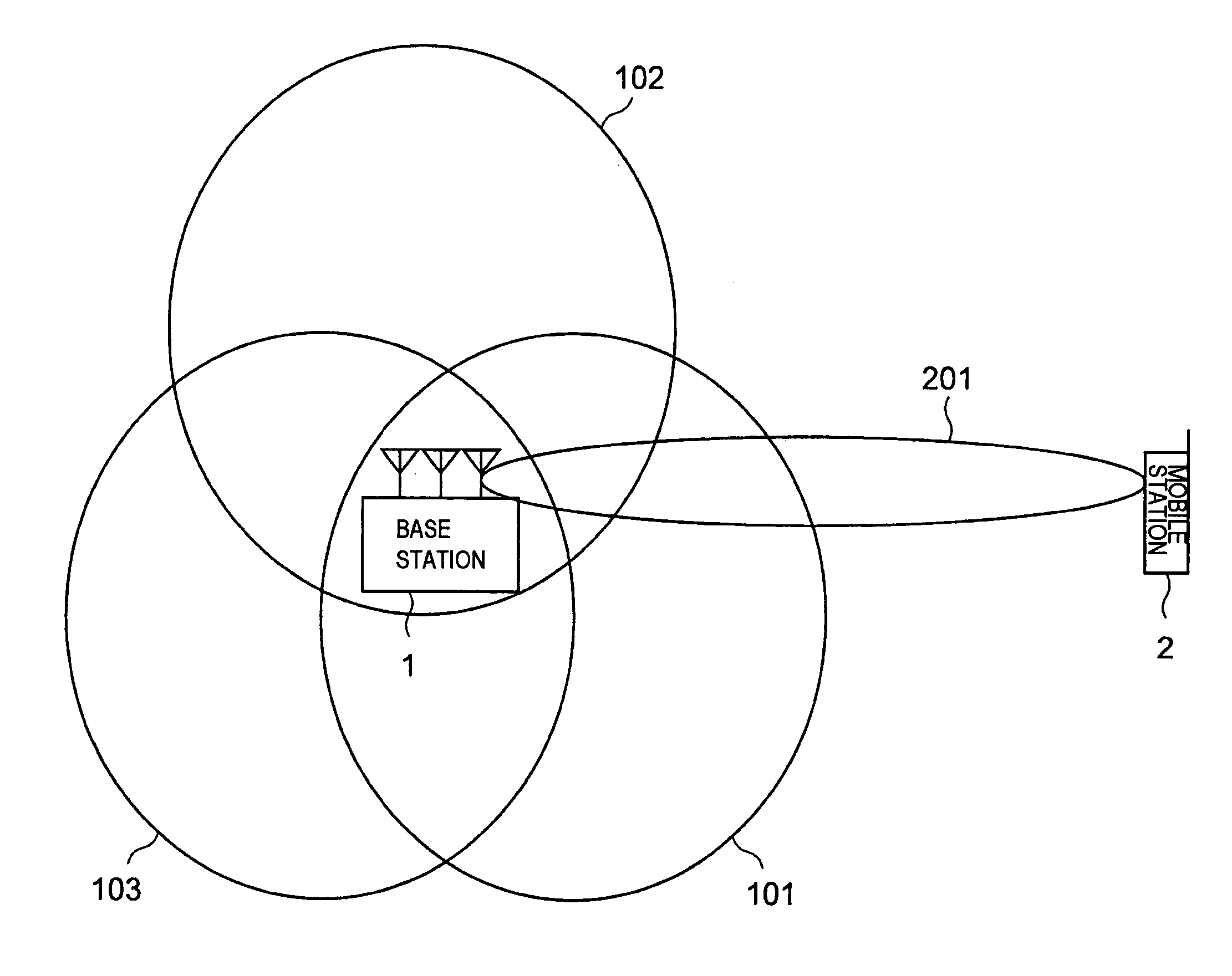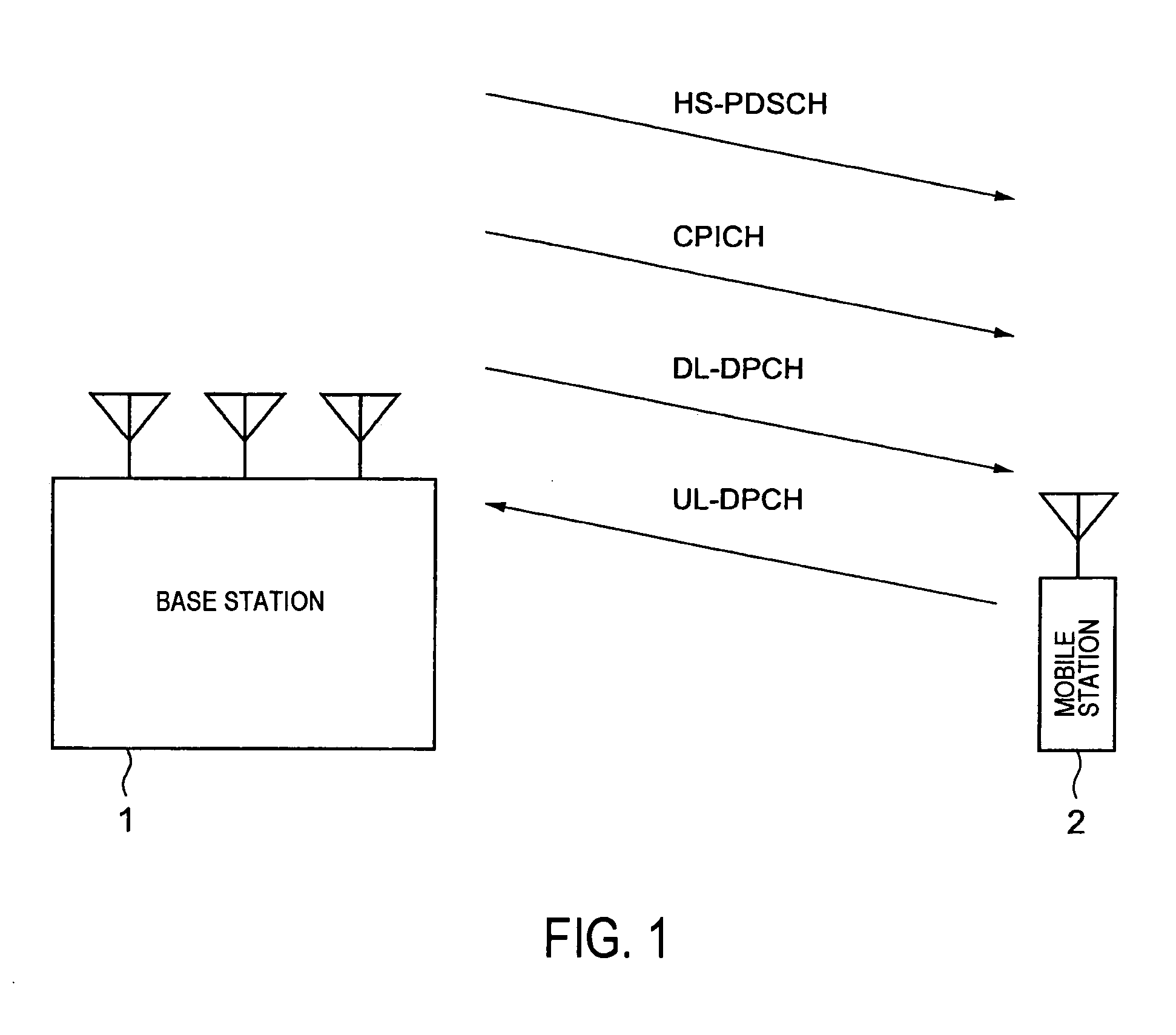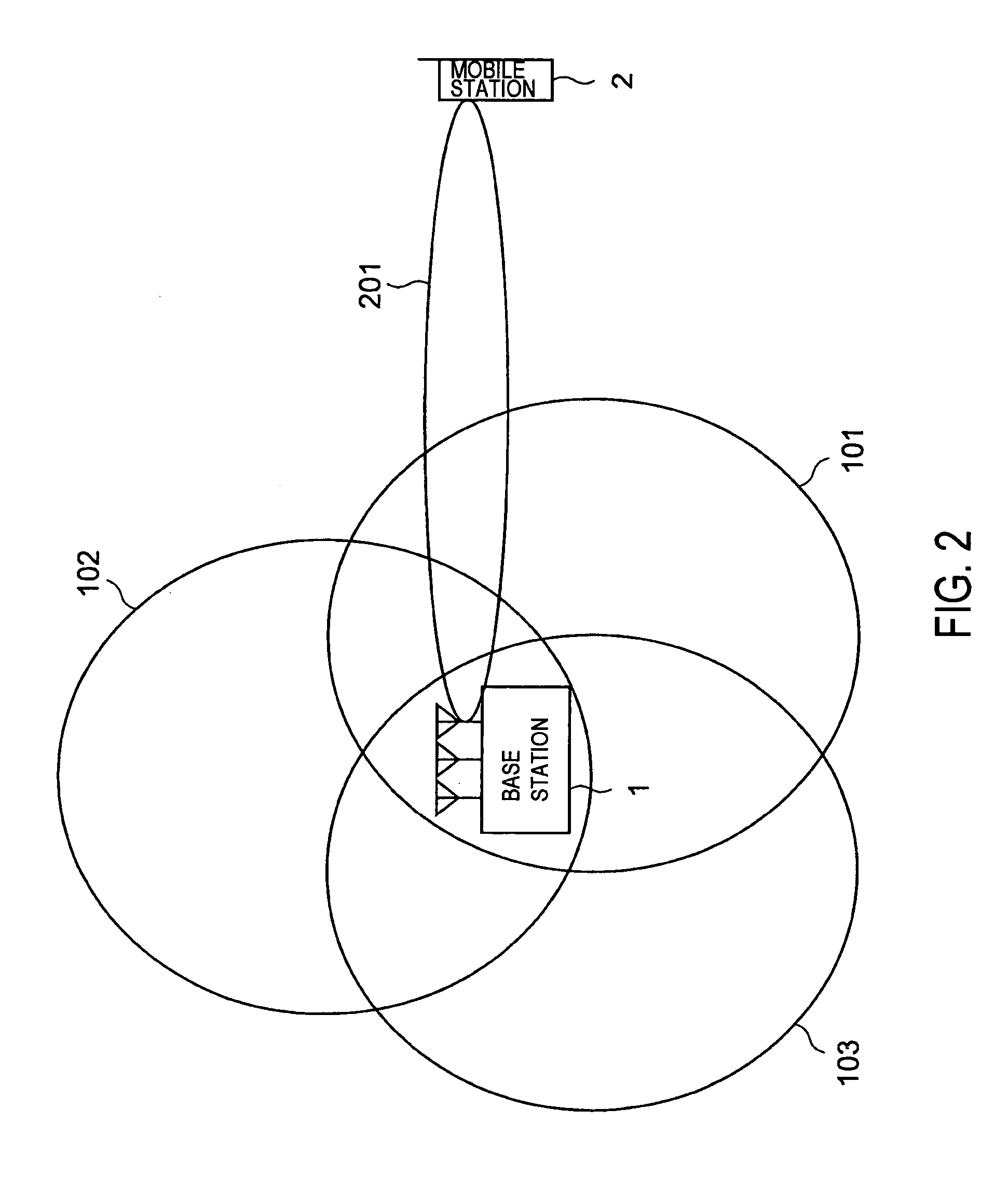Mobile communication system, mobile station, base station, communication path quality estimation method used for the same
a mobile communication system and communication path technology, applied in the field of communication path quality estimation method, can solve the problems of affecting the accuracy of the adaptive antenna, interference to the user receiving packets, and the difference between the estimated communication path quality upon reception, so as to achieve the effect of higher accuracy
- Summary
- Abstract
- Description
- Claims
- Application Information
AI Technical Summary
Benefits of technology
Problems solved by technology
Method used
Image
Examples
first embodiment
[0060]FIG. 2 is a block diagram showing a structure of the mobile communication system according to the present invention. As shown in FIG. 2, the base station 1 transmits different common pilot channels by respective beams 101 to 103 that are controlled in directivity by adaptive antennas. When the base station 1 transmits data to the mobile station 2, the base station 1 transmits the data channel (HS-PDSCH) and the downlink dedicated control channel (DL-DPCH) by the use of a beam 201 individually controlled in directivity. The mobile station 2 estimates a communication path quality by switching between the common pilot channel (CPICH) and the dedicated control channel.
[0061]FIG. 3 is a block diagram showing a structure of the mobile station 2 in FIG. 2. In FIG. 3, the mobile station 2 comprises an antenna 21, a transmission / reception duplex section (DUP: duplexer) 22, a receiving section (Rx) 23, a channel (CH) selecting section 24, a communication path estimating section 25, a us...
third embodiment
[0090] In FIG. 9, the base station according to the present invention comprises antennas 11 to 13, a transmission / reception duplex section (DUP) 14, a receiving section (Rx) 15, mobile station corresponding units 31-1 to 31-3, a scheduling control section 32, and a transmission section (Tx) 19.
[0091] Further, the mobile station corresponding units 31-1 to 31-3 comprise information separating sections 16-1 to 16-3 (information separating sections 16-2 and 16-3 are not illustrated), MCS level control sections 17-1 to 17-3 (MCS level control sections 17-2 and 17-3 are not illustrated), and signal combining sections 18-1 to 18-3 (signal combining sections 18-2 and 18-3 are not illustrated).
[0092] Signals received at the antennas 11 to 13 are inputted into the receiving section 15 serving for respective mobile stations via the transmission / reception duplex section 14 and demodulated in the receiving section 15. The signals demodulated in the receiving section 15 are inputted into the si...
fourth embodiment
[0103] In FIG. 11, the base station according to the present invention comprises antennas 11 to 13, a transmission / reception duplex section (DUP) 14, a receiving section (Rx) 15, an information separating section 16, a spreading rate control section 33, a signal combining section 18, and a transmission section (Tx) 19.
[0104] Signals received at the antennas 11 to 13 are inputted into the receiving section 15 via the transmission / reception duplex section 14 and demodulated in the receiving section 15, and a result thereof is sent to the signal separating section 16. In the signal separating section 16, control information and user data included in the uplink signals are separated from each other.
[0105] The spreading rate control section 33 determines a downward spreading rate based on quality information included in the control information, produces its result and control information, and sends them to the signal combining section 18. The signal combining section 18 combines togethe...
PUM
 Login to View More
Login to View More Abstract
Description
Claims
Application Information
 Login to View More
Login to View More - R&D
- Intellectual Property
- Life Sciences
- Materials
- Tech Scout
- Unparalleled Data Quality
- Higher Quality Content
- 60% Fewer Hallucinations
Browse by: Latest US Patents, China's latest patents, Technical Efficacy Thesaurus, Application Domain, Technology Topic, Popular Technical Reports.
© 2025 PatSnap. All rights reserved.Legal|Privacy policy|Modern Slavery Act Transparency Statement|Sitemap|About US| Contact US: help@patsnap.com



